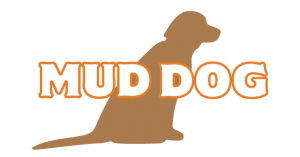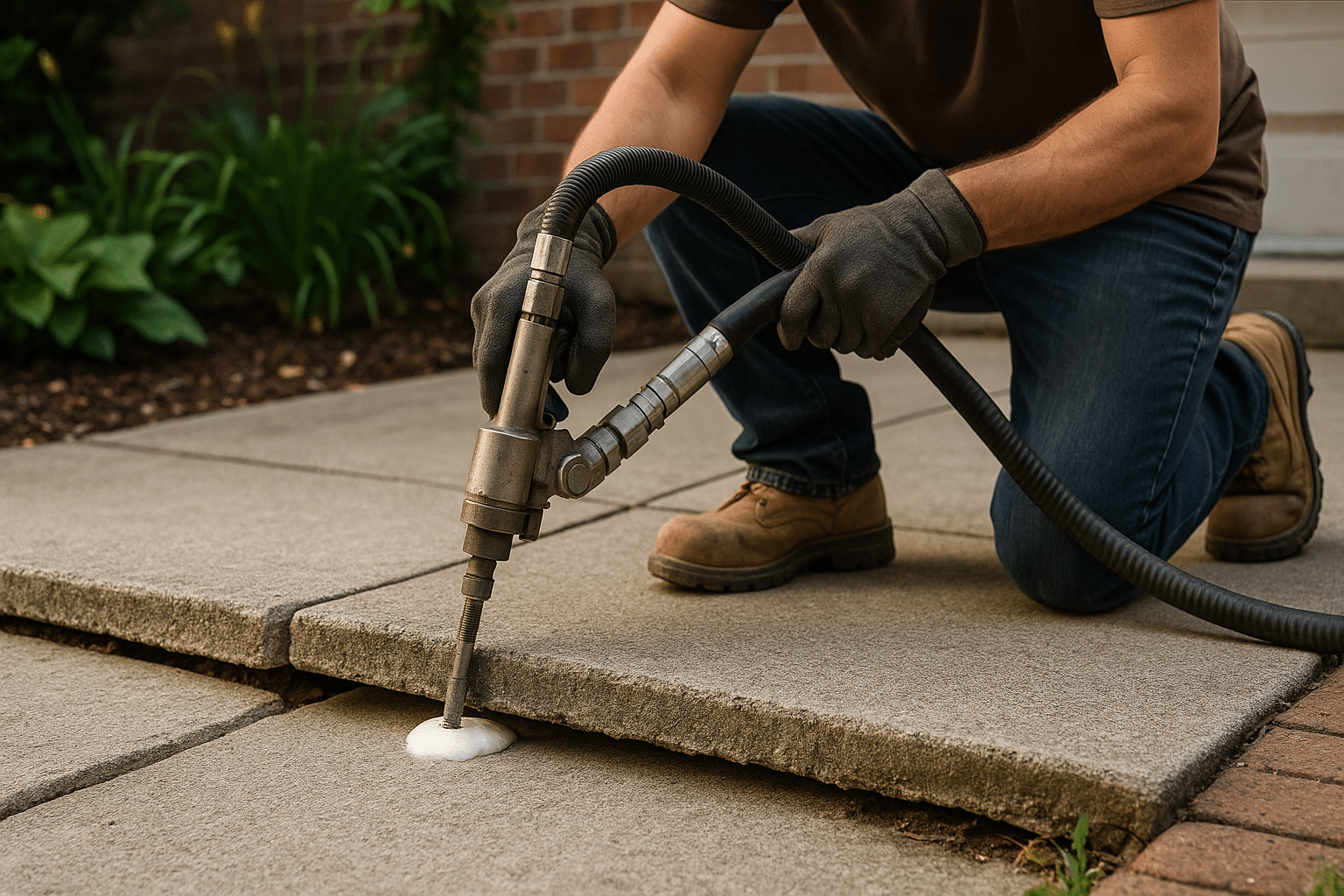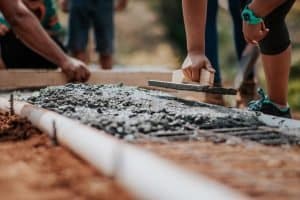Concrete slabs sink. Driveways slope toward the garage, sidewalks trip toddlers, and that Patio you loved last summer looks like it could hide a small stream after a spring thaw. You could tear it out and start over — but you don’t have to. Concrete Lifting gives most homeowners a faster, cleaner, and often more affordable way to fix sunken concrete, especially here in Ogden, UT. Let me explain why so many people are choosing it, and why Mud Dog Jacking does it right.
Okay, so why does concrete sink in the first place?
There are a few usual suspects. Soil erosion, poor compaction when the slab was poured, tree roots, and the freeze-thaw cycles we get around the Great Salt Lake — all common troublemakers. Water is the real villain; it moves soil, it freezes and expands, and it changes how the ground supports the slab. You might be surprised how small shifts under a slab can create big problems on the surface.
Here’s the thing: a sunken slab isn’t always a structural apocalypse. Sometimes it’s just a support problem, not a concrete problem. That means the slab can be lifted back to level rather than bulldozed and replaced. Sounds simple — but there’s nuance, and that nuance matters when you want the fix to last.
What exactly is concrete lifting? (Short, no-nonsense explanation)
Concrete lifting is the process of returning a sunken slab to its original position by filling voids and raising the concrete. Two common methods are used: traditional mudjacking and polyurethane foam injection. Both fill the empty space beneath the slab and push it back up. Both are much less invasive than tearing out the slab and repouring.
In practice, it’s half science and half craft. Technicians use small holes — barely noticeable — to access the voids. They inject material under controlled pressure and watch the slab rise like a slow-breathing patient until it sits even with the surrounding concrete. Then they patch the access points, clean up, and you can walk on it again the same day in many cases.
Mudjacking vs. Polyurethane foam — quick comparison
You’ll hear both terms tossed around. They’re similar goals with different materials and pros and cons. Here’s a simple table to help you weigh them.
| Method | What it uses | Good for |
|---|---|---|
| Mudjacking | A slurry of soil, cement, and water | Larger voids; cost-conscious fixes; older slabs |
| Polyurethane foam | High-density expanding foam | Tighter spaces; minimal weight; faster cure |
Both methods can be excellent. We choose based on soil conditions, slab thickness, and the homeowner’s needs — sometimes even same-job combinations are best.
Why lift instead of replace? The homeowner’s short answer
Replacement sounds clean: tear out, pour new concrete. But it’s messy, costly, and time-consuming. If you can lift the slab, you get a solution that’s:
Faster: Many lifts are done in a day. You’ll avoid weeks of curing time and disruption.
Cheaper: Typically 30 to 70 percent less than a full replacement, depending on the job.
Cleaner: No jackhammers, minimal demolition, and a smaller footprint in your yard.
Greener: Less waste and fewer raw materials. It’s a small environmental win.
It may sound like replacement is permanent and lifting is temporary — but that’s not always true. Put the right material under the slab and address the cause of the settlement, and lifting can be a durable, long-term fix. Honest? There are cases where replacement is necessary — severe structural failure, regrading for drainage, or when the slab is too damaged. We’ll tell you when that’s true.
Benefits that really matter to Ogden homeowners
Living in Ogden, UT, you know the seasons hit concrete hard. Freeze-thaw cycles lift and settle slabs. Landscaping projects and expanding roots add pressure. Here’s why lifting is often the smart local choice:
- Stops trip hazards — important if you have kids, older relatives, or renters.
- Improves Curb appeal — leveled walkways and porches make your house look cared for, which helps resale value.
- Prevents water pooling — fix the slope and you’ll reduce icing in winter and standing water in spring.
- Saves landscaping — you don’t have to rip up plants, pavers, or irrigation lines.
Honestly, for many homeowners this is about safety and comfort as much as cost. You want things to look right and feel solid underfoot. And you want the job done by someone who knows how soils behave in our valley. Mud Dog Jacking specializes in local conditions; we’ve handled everything from older homes near downtown Ogden to newer subdivisions up the hill.
What you can expect when Mud Dog Jacking shows up
We try not to make it mysterious. Here’s our usual flow — short and practical.
1. Inspection: We assess the slab, check for cracks, measure elevations, and probe the soil if needed. Sometimes the problem is drainage, so we’ll point that out.
2. Plan: We recommend mudjacking or foam, explain why, and give a clear estimate. No surprises.
3. Prep and lift: Small holes are drilled, material is injected, and we lift the slab to the target elevation. We take our time until it sits right.
4. Patch and clean: We patch injection points, sweep up, and leave your place tidy. In many cases you can walk on the concrete the same day; heavy vehicles might need a short cure time with foam.
Along the way, we’ll point out anything else that could cause future problems — like gutter downspouts that dump water near the foundation — because fixing the symptom without addressing cause is a setup for repeat work. We’re not fans of that.
Common questions — short answers you’ll actually use
Will the concrete crack after lifting? Maybe. Lifting reduces stress but existing cracks typically remain. We aim for structural level and safety. If aesthetics are a priority, we can discuss overlays or joint repairs.
Is lifting messy? It can sound that way, but compared to full replacement it’s minimal. No jackhammers, less noise, and much less dust. You’ll be impressed with how tidy we keep the site.
How long does the lift last? With proper materials and soil prep, many lifts last decades. Polyurethane foam resists moisture and provides stable support; mudjacking fills larger voids economically. We’ll recommend the right choice for a lasting result.
Cost and return — yes, you can think like an investor for a moment
Cost varies by job size, method, and access. But think about what you’re avoiding: demolition, hauling, new concrete, landscaping repairs, and temporary loss of use. In many cases, concrete lifting pays for itself through avoided costs and improved home value. You’ll also reduce future maintenance headaches — a less obvious but real saving.
Want a ballpark? Give us a call — we’ll give you a realistic estimate and a few options. We don’t do scare quotes or gimmicks; just straight talk and solid numbers.
Maintenance tips — short, honest, and useful
After a lift, you don’t need to baby the concrete, but a little care goes a long way.
- Keep water moving away — adjust downspouts and check grading.
- Avoid heavy loads temporarily — follow our cure recommendations, especially after foam lifting.
- Inspect seasonally — a quick look after winter can catch minor shifts early.
These are simple things, and they help your fix last longer. Trust me — a few minutes a season beats a major repair later.
Final thoughts — why choose Mud Dog Jacking?
Look, you want someone who gets both the technical side and the homeowner side. You want a fix that’s durable, tidy, and makes sense financially. You want a team that knows Ogden soils and weather. That’s us. We mix pros like pressure monitoring and elevation mapping with straight talk and respect for your property. You might hear contractors promise the moon. We prefer realistic goals and solid results.
If your Driveway, patio, or Sidewalk is giving you grief — or you just don’t want to live with that awkward step anymore — give us a shout. We’ll explain your options clearly and show you what we’d do before we do a thing.
Call 801-644-9122 to speak with us today. Or Request a Free Quote online and we’ll get back to you fast.




